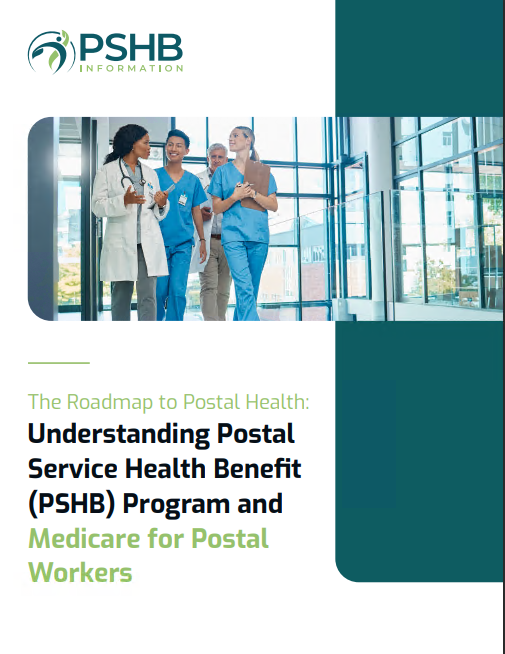Key Takeaways
-
Understanding copayments under the Postal Service Health Benefits (PSHB) program helps you budget for healthcare expenses and navigate routine and emergency medical services with ease.
-
The PSHB program offers a range of costs for in-network and out-of-network services, ensuring flexibility while providing clarity on what to expect for different types of care.
Breaking Down PSHB Copayments
As a Postal Service employee or annuitant, your health benefits are crucial for managing medical costs. The PSHB program provides comprehensive coverage, but understanding copayments—the fixed amounts you pay for specific medical services—is essential to getting the most from your plan. Here’s what you need to know to make informed decisions about routine care and emergency services.
Routine Medical Services: What to Expect
Routine services are the backbone of maintaining good health. Whether it’s a visit to your primary care physician (PCP) or a check-up with a specialist, copayments are straightforward but vary depending on the provider type and network status.
Primary Care Visits
For most in-network PCP visits, you’ll pay a copayment ranging from $20 to $40. This covers consultations for non-urgent concerns, annual wellness visits, and general health monitoring. Out-of-network visits often cost significantly more, with coinsurance rates ranging between 40% and 50%.
Specialist Consultations
When you require care from a specialist, such as a dermatologist or cardiologist, the copayment increases slightly. Expect to pay $30 to $60 per visit if you’re staying within the network. These costs ensure that you receive specialized attention without unexpected financial burdens.
Preventive Care: A Cost-Free Advantage
Preventive care services, such as immunizations, cancer screenings, and wellness checks, are generally covered at 100% for in-network providers. Utilizing these services not only supports your health but also avoids out-of-pocket expenses. Remember, staying within the network is key to fully leveraging this benefit.
Emergency Services: When Time is Critical
Emergencies require immediate attention, and knowing the cost structure helps reduce stress during high-pressure situations. PSHB offers clear guidelines for emergency care costs, ensuring you’re prepared financially when the unexpected happens.
Urgent Care Visits
Urgent care centers are an excellent option for non-life-threatening emergencies, such as minor injuries or illnesses. Copayments for in-network urgent care visits typically range from $50 to $75, providing a cost-effective alternative to emergency room visits.
Emergency Room Services
Emergency room (ER) visits, while more expensive, are necessary for critical health issues. Copayments range from $100 to $150 for in-network care, ensuring that you receive timely treatment without overwhelming financial strain. Be aware that out-of-network ER visits may result in higher out-of-pocket costs.
Ambulance Services
If an emergency requires transportation by ambulance, your plan will cover a significant portion of the costs. Copayments are typically a fixed rate, though it’s wise to confirm your plan’s specifics to avoid surprises.
Navigating Coinsurance for Additional Services
Beyond copayments, some services under PSHB require coinsurance, which is a percentage of the total cost that you’re responsible for paying. These typically apply to out-of-network providers or specialized treatments.
Diagnostic Testing and Imaging
For services like X-rays, MRIs, and blood tests, you’ll encounter coinsurance rates ranging from 10% to 30% for in-network services. Out-of-network rates can be as high as 50%, so sticking to network providers can save you significant amounts.
Inpatient and Outpatient Services
Hospital stays and outpatient surgeries often involve coinsurance rather than flat-rate copayments. For example, you might pay 20% of the cost for an in-network surgery, while out-of-network procedures could cost you up to 40%.
Strategies to Minimize Your Costs
Understanding your plan’s cost structure empowers you to manage healthcare expenses effectively. Here are some strategies to help you minimize your out-of-pocket costs:
Stay In-Network
Using in-network providers is the simplest way to reduce costs. The PSHB program negotiates lower rates with these providers, resulting in lower copayments and coinsurance for you.
Use Preventive Services
Take advantage of the fully covered preventive care services. Regular screenings and check-ups can catch health issues early, potentially avoiding more costly treatments down the line.
Plan for Emergencies
Keep a list of in-network urgent care centers and hospitals. This ensures you know where to go in case of an emergency, minimizing costs and delays.
Review Your Plan Regularly
During open enrollment periods, assess your current plan and consider any changes to your healthcare needs. Adjustments to your plan could result in more cost-effective coverage.
Comparing Routine and Emergency Costs
Understanding the difference in costs between routine and emergency services can help you make better choices about when and where to seek care. For example, visiting an urgent care center instead of an ER for minor injuries could save you $50 or more per visit.
Scenario: Mild Symptoms
For issues like a persistent cold or a minor sprain, urgent care provides appropriate treatment at a lower cost than an ER. Routine follow-ups with your PCP afterward can also be more affordable than additional emergency care.
Scenario: Life-Threatening Emergencies
In cases of severe chest pain or major injuries, the ER is the right choice. While more expensive, these services are lifesaving, and your copayment ensures access to critical care without delay.
Making the Most of PSHB Benefits
To fully utilize your PSHB coverage, it’s important to understand how benefits work together. Copayments, coinsurance, and preventive care services all play a role in managing your healthcare expenses.
Coordinate with Medicare (If Applicable)
For annuitants who are Medicare-eligible, coordinating PSHB benefits with Medicare can further reduce costs. Many plans offer reduced deductibles and waived copayments when paired with Medicare Part B.
Track Your Expenses
Use online portals or mobile apps to monitor your healthcare spending. This helps you stay within your budget and ensures you’re aware of any potential out-of-pocket costs.
Ask About Financial Assistance
If you anticipate high medical costs, inquire about assistance programs. Some plans offer options to spread payments over time, easing the financial burden of major medical expenses.
Key Timelines to Remember
Keeping track of important dates helps you stay on top of your coverage and avoid lapses:
-
Open Enrollment: October 15 to December 7 annually.
-
Plan Adjustments: Make changes during qualifying life events, such as marriage or the birth of a child.
-
Annual Benefits Review: Review your plan details each year to understand any updates to copayments or coverage.
Why Understanding PSHB Copayments Matters
Mastering the details of your PSHB plan’s copayment structure helps you make informed healthcare decisions. Whether it’s managing routine visits, preparing for emergencies, or planning for major treatments, knowing your costs in advance allows you to budget effectively and avoid unexpected expenses.






